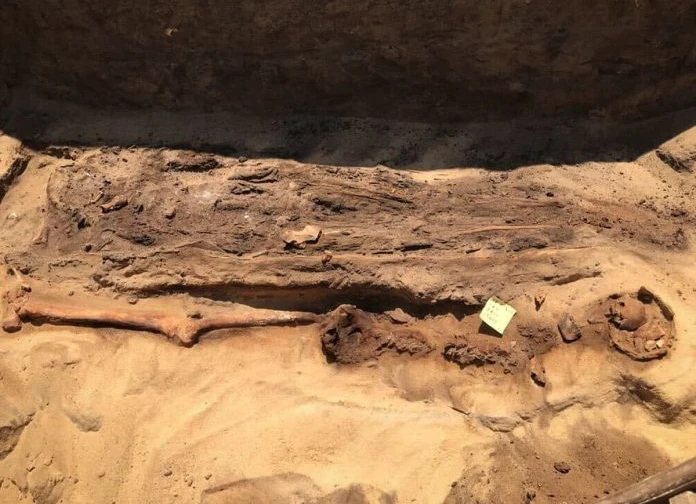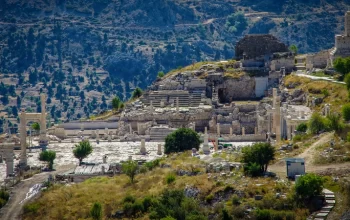
In Egypt, archaeologists unearthed funerary materials and mummies with golden tongues during an excavation.
The discovery was made a few days ago in Monufia, in northern Egypt, by archaeologists from the Egyptian Ministry of Tourism and Antiquities. Archaeologists investigating the necropolis at Quwaysinā (Quesna) found mummies with golden tongues, wooden anthropoid coffins, gold objects, and amulets during the excavation. Researchers think that burial of the dead with a golden tongue was practiced so that they could communicate in the afterlife and talk to Osiris.
Osiris: In Egyptian mythology, he is the ruler of the underworld and the god of the dead. He is the son of Geb, the earth god, and Nut, the sky goddess. In ancient Egyptian wall paintings, it is usually depicted with green skin.1
The archaeologists who carried out the excavation stated that the cemetery has a different architectural style. Researchers think that the necropolis was used both during the Ancient Egyptian period and the Roman period.

In Egypt, Golden-tongued mummies were also found in February and December of last year.
Funerary Practices in Ancient Egypt
Scholars believe that the first clues to the preservation of the physical body in Egypt date back to the fifth millennium BC. This is one of the reasons why cremation practices common during the Neolithic, Chalcolithic and Bronze Age were not common in Egypt.
The earliest tombs found in Egypt are usually simple and shallow pits, with few grave goods. However, over time, depending on the changing socioeconomic and cultural changes, the size of the tombs increased and the number of items in the tombs increased.
Belief in the idea of an afterlife in Ancient Egypt led to human sacrifices over time. Many human skeletons have been found in the tombs of high-status people. The people who were sacrificed were buried with the deceased, possibly to serve the deceased in the afterlife.
The earliest evidence of mummification of the dead in ancient Egypt dates to the first half of the fourth millennium BC.2
With the widespread use of funerary practices, figural and decorative variations have occurred in both burial styles and coffins. After the Roman conquest of Egypt in 30 BC, the influence of Romanesque elements in tombs increased.
The Ritual of Opening the Mouth
It was a ritual practiced from the Old Kingdom (2700-2200 BC) to the Roman Period. The ancient Egyptians used to open the mouths of the corpses, accompanied by certain ceremonies, before burying the dead. The purpose of the ritual was that the dead could eat, drink and speak in the afterlife. It seems that in some parts of Ancient Egypt, the ritual of opening the mouth was accompanied by the golden tongue ceremony.
- “Color in Ancient Egypt“, Graciela Gestoso SINGER, January 2010[↩]
- “Mummy Yields Earliest Known Egyptian Embalming Recipe“, Maya WEI-HAAS, National Geographic, August 16, 2018[↩]





